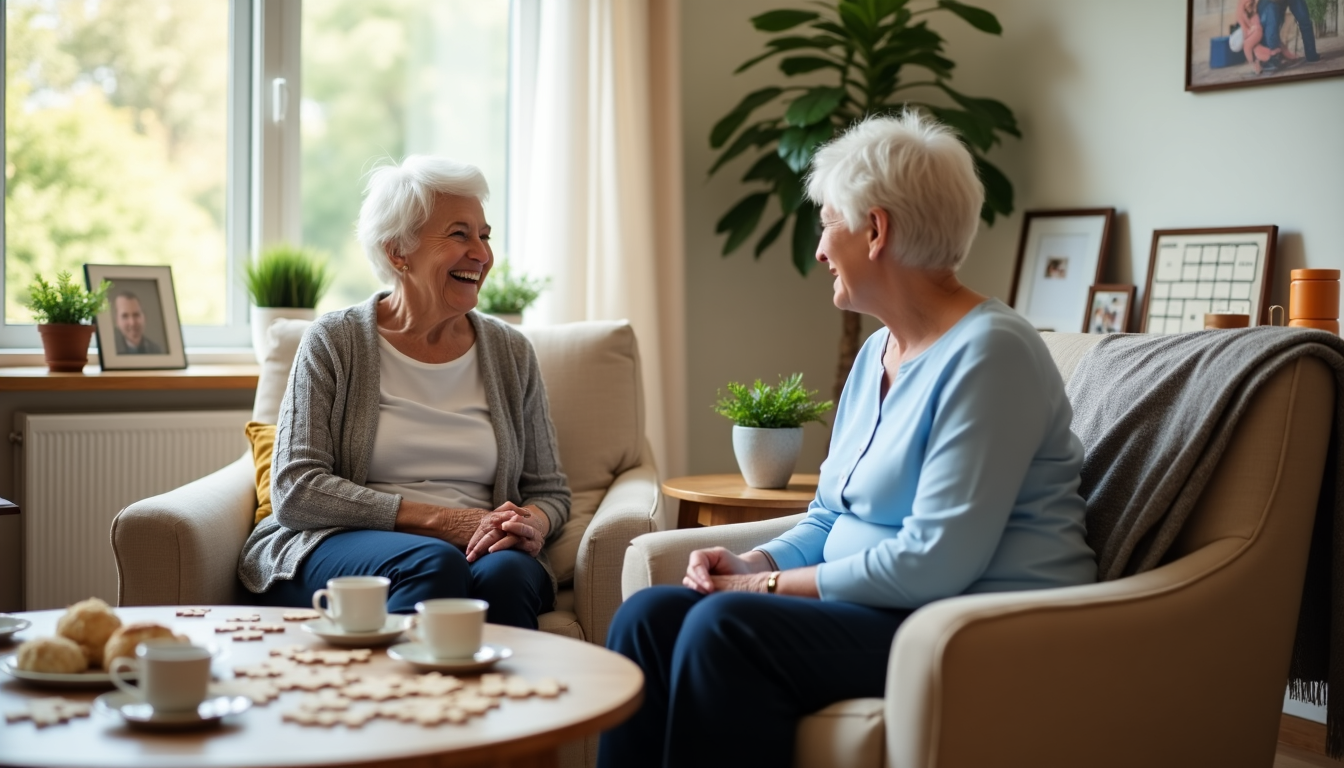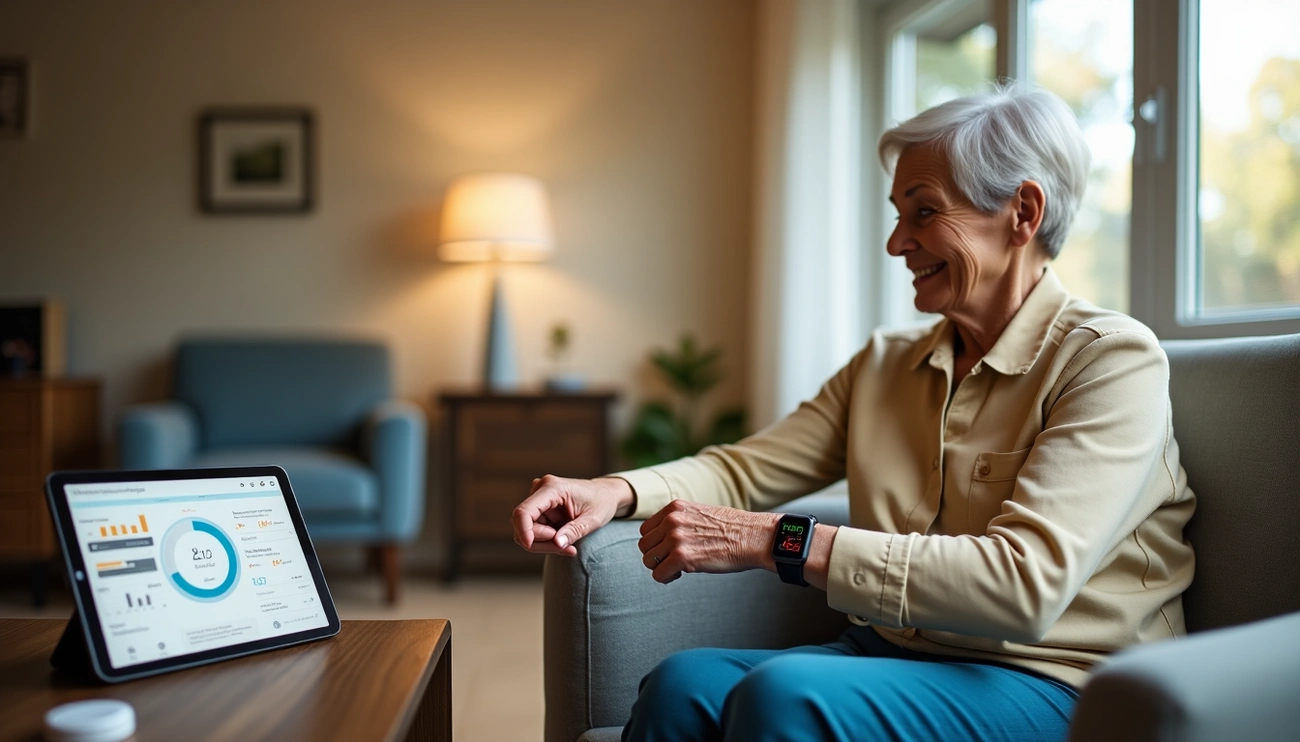Senior companion program volunteers donated more than 8,365 hours of their time last year, helping 47 clients through weekly visits and phone calls. Just 14 dedicated volunteers achieved this significant impact.
The volunteers provide assistance to older adults with daily living tasks, transportation to appointments, and companionship. This support system reduces isolation and improves the overall health of older adults who remain in their communities.
This guide examines how the senior companion program functions, the benefits it provides to both seniors and volunteers, and methods for getting involved. Readers interested in volunteering or seeking companion support for themselves or family members will find essential information about the program’s structure and impact.
What is the Senior Companion Program?
The Senior Companion Program is a federally funded initiative through AmeriCorps Seniors that connects older adults with seniors needing assistance to maintain independence in their homes. The program dates back to 1968 in some communities and serves two key purposes: it engages adults 55 and older in meaningful volunteer work while addressing critical needs for elderly support in communities.
Senior Companions are volunteers aged 55+ who offer non-medical supportive services to older adults and people with disabilities. These volunteers assist with activities that become increasingly challenging with age, including:
- Friendly visits and companionship to reduce isolation
- Transportation to medical appointments and grocery shopping
- Assistance with meal preparation and light housekeeping
- Medication reminders and help with daily activities
- Respite care for family caregivers
Volunteers typically serve 15-40 hours weekly, Monday through Friday during daytime hours. The program requires no weekend, holiday, or overnight commitments. Volunteers meeting income eligibility requirements (below 200% of the federal poverty threshold) can receive a $4.00 per hour tax-free stipend, transportation reimbursement, and additional benefits.
Senior Companions complete at least 20 hours of pre-service orientation before beginning their service. This training covers topics like working with older adults, program policies, and elder advocacy. They also receive a minimum of 24 hours of ongoing training annually after their first year.
The program’s impact is considerable. Lane County alone reports Senior Companions have provided more than 1.5 million service hours since 1974, helping over 500 seniors and disabled adults each year. The program maintains a strong commitment to inclusivity—volunteer eligibility cannot be restricted based on education, experience, race, gender, religion, disability, or other personal characteristics.
Through their service, Senior Companions help elderly individuals age with dignity in their own homes rather than institutional settings, improving quality of life while reducing healthcare costs.
How to Get Involved with Senior Companion Services
Joining the senior companion program is straightforward, whether you want to volunteer or need services. While processes vary slightly by location, most programs follow similar procedures nationwide.
For Aspiring Volunteers:
To qualify as a Senior Companion volunteer, you must:
- Be at least 55 years old
- Pass required background checks
- Provide documentation of a physical exam certifying your ability to volunteer
- Be willing to serve between 5 and 40 hours weekly
Volunteers seeking the tax-free stipend (currently $4.00 per hour in some regions) must have income within 200% of the Federal poverty guidelines. Many programs give priority to applicants whose income doesn’t exceed 100% of the poverty line.
New volunteers complete 20 hours of pre-service orientation including classroom instruction, reading materials, and shadowing experienced companions. Monthly in-service meetings provide ongoing skills development.
For Those Seeking Companion Services:
Seniors receiving services typically must:
- Be 60 years or older
- Live independently (not in nursing facilities)
- Need assistance with daily living tasks
- Be willing to accept companion services
Those requesting a Senior Companion should contact their local program directly. Most organizations provide online forms, dedicated phone lines, or email addresses for service requests.
Benefits Beyond the Basics:
Senior Companion volunteers receive several benefits beyond helping others:
- Travel and meal reimbursements
- Accident and liability insurance coverage
- Service recognition
- Paid holiday, sick, and vacation time in some programs
To find your nearest program, contact your local Area Agency on Aging, visit the AmeriCorps website, or use the AmeriCorps Seniors Pathfinder tool to search for opportunities in your area.
Religious organizations and community groups sometimes operate their own companion care services through volunteer programs, creating additional options for both volunteers and seniors needing assistance.
Benefits of the Program for Seniors and Volunteers
Social isolation increases health risks significantly for older adults. Research shows socially isolated seniors face a 50% higher risk of dementia, 29% increased risk of heart disease, and 32% greater risk of stroke. The senior companion program addresses these risks through regular human connection.
Seniors receiving companion services experience several measurable benefits:
- Reduced loneliness and isolation
- Better management of chronic health conditions
- Improved cognitive function
- Enhanced ability to maintain independence
- Improved nutrition and medication adherence
Senior companions also provide essential respite for family caregivers. Among caregivers with critical needs, 76% reported that companion services helped them “a lot” with personal time and household management. About 60% said these services allowed them to participate more in social activities and spend time with friends or relatives.
The benefits extend to volunteers as well. After one year of service, 88% of volunteers who initially experienced companionship deficits reported decreased feelings of isolation. Additionally, 70% of volunteers who initially reported five or more depression symptoms experienced fewer symptoms after their first year.
Many volunteers find new purpose through the program. One volunteer noted, “Being a Senior Companion is a sort of therapy for me because it gets me moving and active, and gives me a purpose for tomorrow”.
Qualifying volunteers receive concrete benefits beyond emotional rewards, including tax-free stipends, travel reimbursements, meal allowances, and liability insurance. Perhaps most valuable, however, are the friendship and sense of purpose they gain—key elements for healthy aging.
The program creates a mutually beneficial arrangement: seniors helping seniors, with both parties gaining from the relationship. This explains why many volunteers serve for years, developing lasting connections with those they assist.
Conclusion
Senior companion programs stand as effective examples of how community service benefits both parties involved. Through weekly visits and practical support, these programs allow older adults to maintain independence while giving volunteers meaningful ways to stay active.
Research demonstrates the program’s results – reducing isolation, improving health outcomes, and providing essential relief for family caregivers. The most convincing evidence comes from volunteers themselves, who report fewer depression symptoms and newfound purpose after joining.
The numbers tell a clear story – just 14 volunteers contributed over 8,365 hours last year, helping 47 seniors maintain better quality of life. Behind these statistics are countless personal connections and moments of genuine companionship that define the program’s real impact.
Senior companion programs show that age brings valuable experience worth sharing with those who need support. Whether you’re an older adult looking for purposeful volunteer work or someone seeking companion services, these programs provide structured ways to make meaningful differences in your community.
FAQs
Q1. What is the Senior Companion Program and who is it for? The Senior Companion Program is a federally funded initiative that pairs volunteers aged 55 and older with seniors who need assistance to remain independent in their homes. It serves older adults and individuals with disabilities, providing non-medical supportive services and companionship.
Q2. How can I become a Senior Companion volunteer? To become a Senior Companion volunteer, you must be at least 55 years old, pass background checks, provide documentation of a physical exam, and be willing to serve between 5 and 40 hours weekly. Contact your local Area Agency on Aging or visit the AmeriCorps website to find opportunities in your area.
Q3. What services do Senior Companions provide? Senior Companions offer a range of non-medical supportive services, including friendly visits, transportation to appointments and errands, assistance with meal preparation and light housekeeping, medication reminders, and help with daily activities. They also provide respite care for family caregivers.
Q4. Are there any benefits for Senior Companion volunteers? Yes, volunteers may receive various benefits, including a tax-free stipend (if income-eligible), travel and meal reimbursements, accident and liability insurance coverage, recognition for their service, and in some programs, paid holiday, sick, and vacation time.
Q5. How does the Senior Companion Program benefit both seniors and volunteers? The program helps reduce loneliness and isolation for seniors receiving services, improves their ability to manage chronic health conditions, and enhances their independence. For volunteers, it provides a sense of purpose, decreases feelings of isolation, and can even help reduce symptoms of depression, creating a mutually beneficial relationship.




